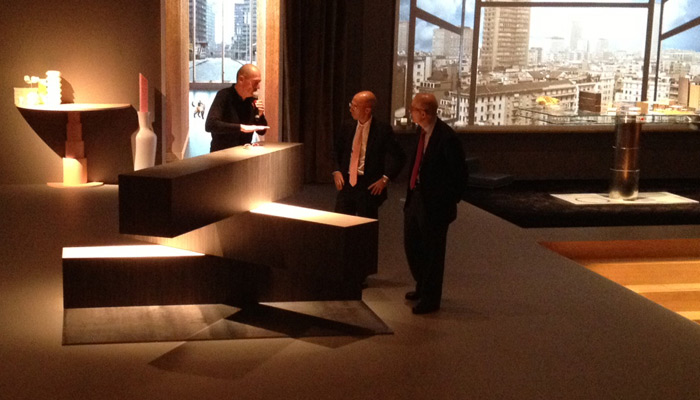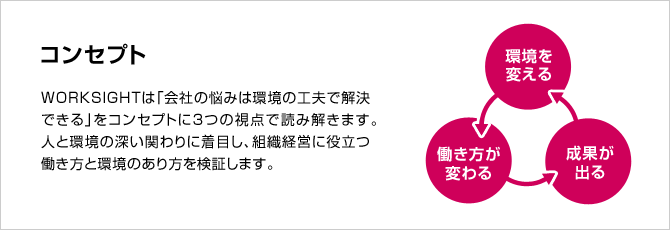振り返り引き続き。次は更にちょと戻って4月4日にあったハーバードデザインスクールでのカンファレンス「The Future of Work Space」(詳細)です。(もう1ヶ月半も前ですが・・・)元々大学の専攻が「ワークプレイスデザイン」であったため完全に「興味本位」で、課題の息抜きとして参加してきました。
驚くほど参加者数が(豪華パネリストなのに!)少なく、後日建築学科の友人に聞いてみたところ、その日は他のデザインスクール内のイベント(か授業)と重なっていて行きたかったけれど行けなかった人が多かったとのこと。
パネリストの方々は以下の通り
・Allen Sayegh (Adjunct Associate Professor of Architectural Technology, GSD)
・Knoll社の
Andrew Cogan (Chief Executive Officer, Director, Knoll, Inc.)
Benjamin Pardo (Executive Vice President, Director of Design, Knoll Inc.)
・Antoine Picon (G. Ware Travelstead Professor of the History of Architecture
(Edith Acermann教授)(MIT Media LabのHP)
ちょうど先日世界大手のGensler(建築・建築コンサルファーム)が
驚くほど参加者数が(豪華パネリストなのに!)少なく、後日建築学科の友人に聞いてみたところ、その日は他のデザインスクール内のイベント(か授業)と重なっていて行きたかったけれど行けなかった人が多かったとのこと。
パネリストの方々は以下の通り
・Allen Sayegh (Adjunct Associate Professor of Architectural Technology, GSD)
・Knoll社の
Andrew Cogan (Chief Executive Officer, Director, Knoll, Inc.)
Benjamin Pardo (Executive Vice President, Director of Design, Knoll Inc.)
・Antoine Picon (G. Ware Travelstead Professor of the History of Architecture
and Technology, GSD)
・Edith Ackermann (Senior Research Associate, REAL, GSD)
・Gehry Partners社の
Craig Webb (Principal Designer, Gehry Partners)
・Bill Porter (MIT)
・Edith Ackermann (Senior Research Associate, REAL, GSD)
・Gehry Partners社の
Craig Webb (Principal Designer, Gehry Partners)
・Bill Porter (MIT)
豪華!Knoll社は大学時代から知っていたけれども生のスピーカーに触れる機会は初めてでした。個人的にはEdith Ackermann教授の存在を知れた事が大きかったのとGehry Partners社から聞けた現在進行中のFacebook本社の設計プロジェクトが楽しかったな、と思った夜でした。フルの2時間ビデオはこちらにアップされています。
印象的だったポイント:① Concept of technology and interaction adds another dimension to the use of interior, the issue of furniture, the equipment of interior、② 10 years ago, social media, facebook didn't exist, 20 years ago, the internet was only for uncool geeks everything we do in GSD (design school) is about the future, that needs to last 20-30 years from now so...what does 'The Future of Work Space" mean?、③ Work space had little change since typewriter/PC era, physical meeting room is still very important but how we work, what we produce... the whole notion of productivity would change、④ "More digital we become, the more physical we have to be"
(Knoll社の二人より)
・4 major drivers of change:① Continued demographic shifts(働き方、人とのつながり方の変化、②Ubiquitious technology(HomeとWorkの境界線が曖昧に)、③Demand for speed and innovation、④Relentless drive for cost containment(do more with less)
・しばらく前に一度cubicleの概念が壊され、collaborative workspaceへのシフトが起きた。しかし必ずしも全員に支持された訳ではなかった
・しばらく前に一度cubicleの概念が壊され、collaborative workspaceへのシフトが起きた。しかし必ずしも全員に支持された訳ではなかった
・オープンスペース(コラボレーション用)と個別に集中できるスペースのバランスが重要だった。在宅勤務OKとしても出社する人もまだ大半だった。Presence matters。
・最近のキーワードはharnessing creativity, capturing innovation, peope centric, start-up vitality, consumerized technology (both domestically and work space), networked professionals..etc
・YahooのマリッサによるBack to the office!の動き:”The social collaborative values of the office cannot be supplanted virtually"
・プロジェクト例 Rem Kolhaas (MOMA)(関連記事)
 |
| Knoll社 HPより |
(Antoine Picon教授)
・社会で急激な変化が起きているときにしてはいけない二つのこと:① Believe in simplicitic scenario(ガラッと何かが変わるという単純なシナリオを信じること)、②Believe that nothing will change(何も変わらないと信じること)
・また我々の持っている偏見の存在にも注意、様々な働き方の台頭は(teleworkingなど)従来のオフィスでの働き方を置き換えるのではなく、補完するもの(教育と同じ)
(Edith Acermann教授)(MIT Media LabのHP)
・世代間の緊張(generational tensions)、これはopportunity to engage a mix of people who bring their unique experience and skills
・有名な「The 2020 Workplace: How Innovative Companies Attract, Develop, and Keep Tomorrow's Employees Today」- Jeanne Meisterを紹介しながらそこで区別されている5つの世代グループカテゴリーを共有68歳以上のVets、50−67歳のBaby Boom、33-49歳のGenexers、26-33歳のMillenian、それより若い層(こういう記事も見つけました)
 |
| Amazonより |
・オフィスデザインに関係する要素としては(かつ世代間で差があるのは)technology use and its impact on communication, social protocols, loyalties, boundaries, multi-(mono)-tasking, modes of inquiry, ways of sharing, ways of negotiation (hot vs cool), pace, tolerance to noise, levels of commitment, degree of autonomy, attribution of failure, inner-outer driven, tolerace to uncertainty, delayed gratification など
 |
| From "The 2020 Workplace" |
・Today's workers know they have to be lifelong learners lifelong learners are becoming increasingly temporary workers. Keep float in volatile job market. Growing older younger, staying younger older. In such world, mobility and flexibility is the key
・とはいえgenerational generalizations(一般化)には注意:people learn to work, live with others who have different work/lifestyles、generational traints are just one of the variation in diverse workforce
・respecting difference in people, much can be gained by recognizing what binds them together
(Craig Webb氏)
・Flat organizationであるFacebookのオフィスの設計
★Donald Schonはリフレクション関係で教育学部のクラスで記事を読みました!
・"Workplace is culturally and geographically situated"
・"Workplace is culturally and geographically situated"
+++++++++++++++++++++++++++++++++++
これ系の話だと、若干上記のオフィス内ダイナミクスのフォーカスではないけれどもリンダ・グラットン教授の「ワーク・シフト ― 孤独と貧困から自由になる働き方の未来図」も有名ですね
ちょうど先日世界大手のGensler(建築・建築コンサルファーム)が
以下のようなレポートを発行していました。2013 Gensler Design Forecast まだゆっくり読んでないのですが以下の項目でトレンドをリサーチしたものです。一つ一つはとても短いサマリーしかないですが同社のViewpointページにはそれぞれもう少し深堀したレポートもあります。
① The Future of Work
- Workplace
- Consulting
- Commercial Office Building
- Corporate Campus Headquarters
- Professional Service Firms
- Financial Services Firms
- Creative Media
- Product Design
- Science & Technology
② The Future of Health & Wellness
③ The Future of Lifestyle
- Mixed Use & Entertainment
- Retail Centers
- Retail
- Hospitality
- Sports & Recreation
- Brand Design
④ The Future of Community
- Planning & Urban Design
- Mission Critical
- Aviation & Transportation
- Education & Culture
先週はニューヨークで上記Education & Cultureチームが実施していたスモールMeetUpにも参加しました。空間デザインとその中で行動する人に関する研究の深堀、時代の変化とmutli generationalな人材の活用と・・・ワクワクする世界だと思います。
+++++++++++++++++++++++++++++++++++
以前もブログに書きましたが(「LILA★働くことと学ぶこと」)日本だとコクヨさんのWORKSIGHTが素敵なのです!(2011年10月創刊)最新号は「外とのつながりで発想するオフィス」。取材企業はZappos, Gore, Ziba, 日建設計, ライフネット生命と豪華なようです★



